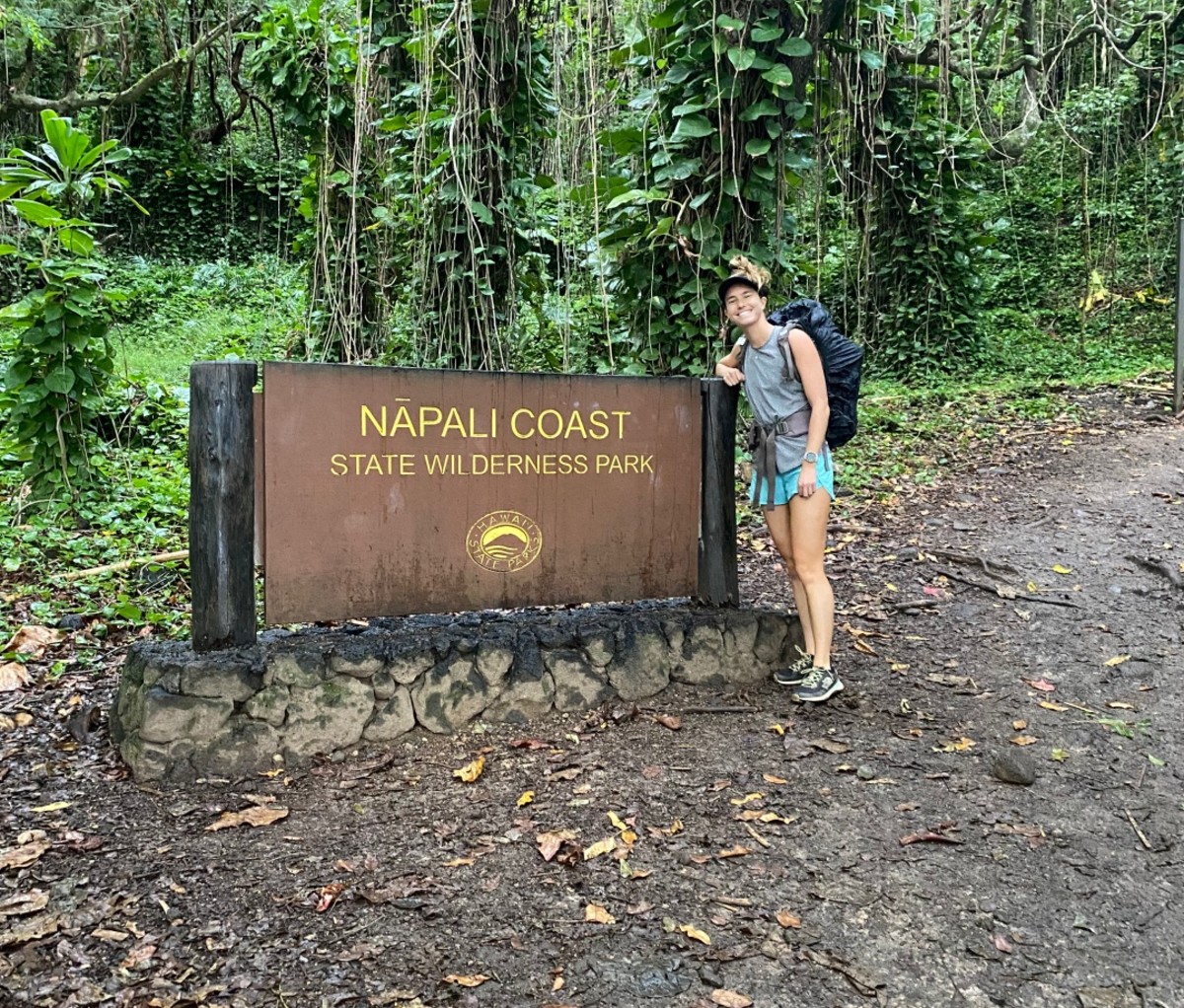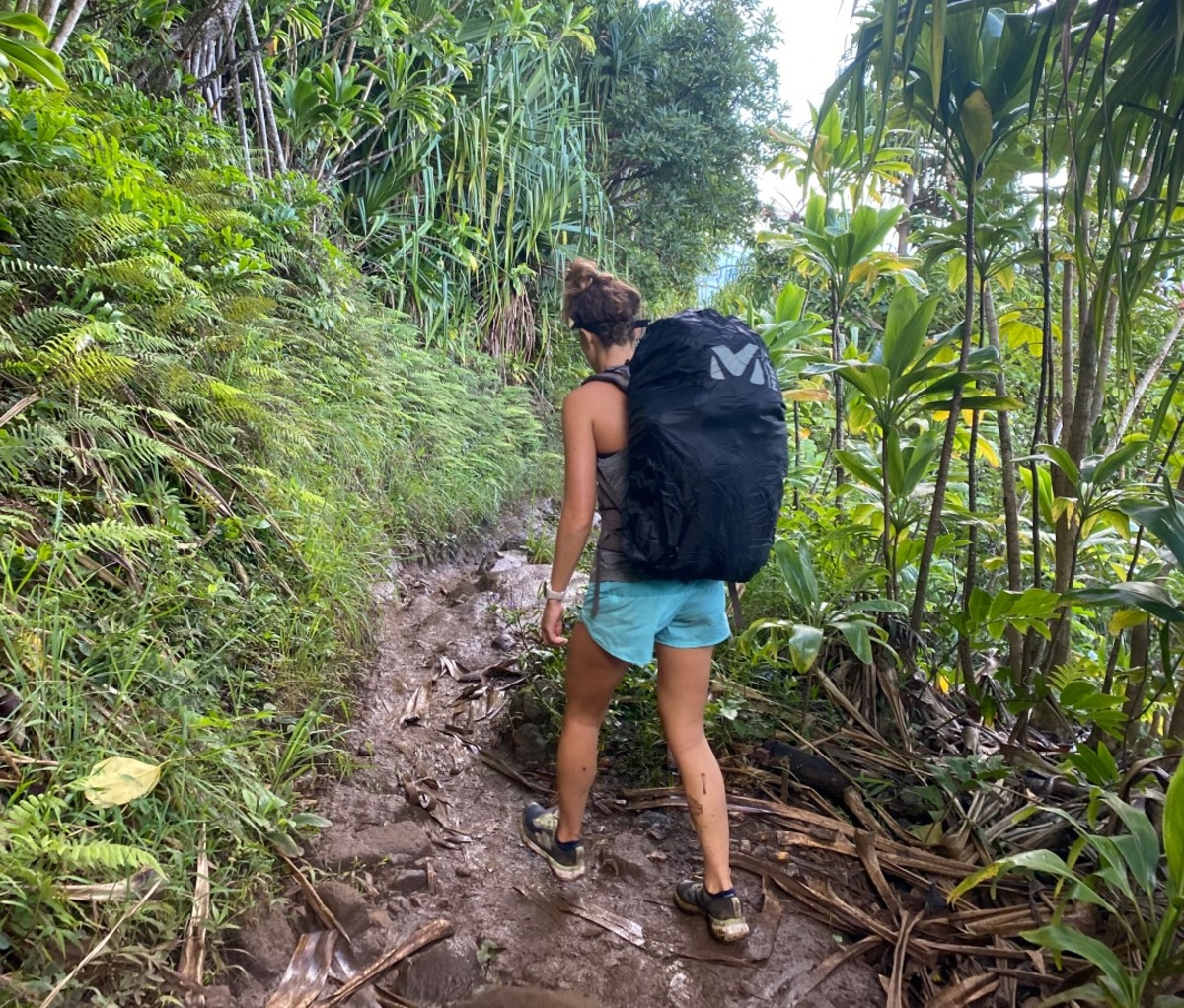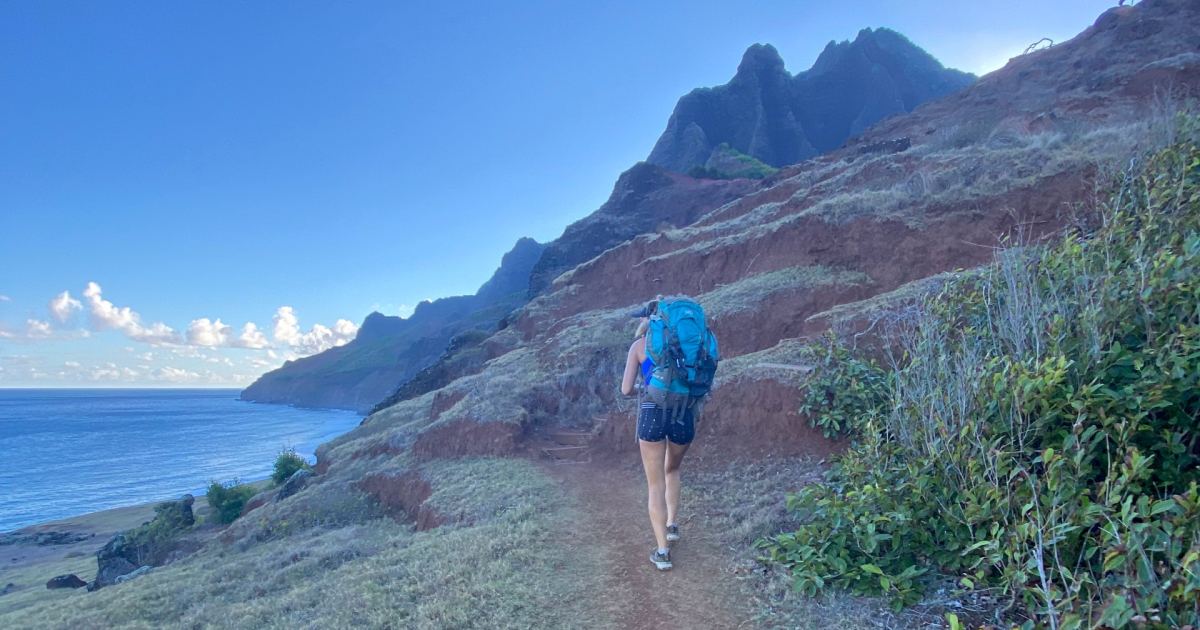No products in the cart.
Fitness Tips
The Beginner’s Guide to Preparing for a Trek
Backpacking is a great way to escape the hustle and bustle of daily life. A good thru-hike allows you to escape from the crowds and fully immerse yourself in nature. Although backpacking is plenty rewarding, heading out for the first time can be intimidating. But with solid training and pre-trip planning, the transition can be a smooth one.
Here, we’ve rounded up some tips for getting started with thru-hiking. If you follow them, they’ll help prevent you from learning backcountry lessons the hard way.
Thru-Hikes 101: The Beginner’s Guide to Preparing for a Trek

The author thru-hiking in Hawaii Rebecca Parsons
1. Choose Your Hike
If you’ve never been backpacking before, attempting to tackle the Pacific Crest Trail on your first go probably isn’t your best move. Set yourself up for success by researching beginner backpacking trips in your local area. REI and Wildland Trekking are both good resources, and they offer guided trips if you don’t want to go alone. For your first trip, choose something with minimal elevation gain and keep your trek in the one-to-three-day range.
2. Plan Your Route
After you’ve decided where you want to go, it’s time to plan out your exact route and where you’ll sleep. Many thru-hikes have designated campsites along the way, while others allow you to stop anywhere along the trail.
To create your route plan, consider the distance you want to cover each day. It’s a good idea to begin with a short trip for your first experience; something like 10–20 total miles broken into multiple days is a good starting point. Then look for campsites that are spaced roughly that distance apart. It’s also important to plan out your water stops–you’ll need approximately one liter of water for every two hours of hiking. Be sure to check if there will be creeks or spigots to refill at along the way; if not, you’ll need to carry enough water for the entirety of the trip.
3. Pack Your Gear
Packing is one of the most important prep tasks for any thru-hike. That’s because if you forget something, you’re out of luck—there aren’t any minimarts to pick up forgotten items along the way. Essential items include a backpack, sleeping bag, sleeping pad, tent, food, water and water filters, clothes, good hiking boots or shoes, and a first aid kit. REI’s online checklist is a good resource to ensure you’re not forgetting anything essential.
4. Make a Training Plan
Unless you’re incredibly fit, you’ll want to do some training before you attempt your first thru-hike. Give yourself plenty of time: It’s a good idea to start training eight to 12 weeks before your trip. To plan your training, consider how far you plan on hiking each day and how much weight you’ll be carrying. To determine that weight, fill your pack with everything you plan on bringing on your trip and weigh it.
There’s no one-size-fits-all training plan, but a good rule of thumb is to do a mix of cardio and strength training, and try to work out at least three days a week. The major muscle groups used during backpacking are your legs and your core, so you’ll want to focus on building strength and endurance in both.
Good cardio options include trail running, biking, hiking, and anything that gets your heart pumping. For strength training, try exercises that build muscle in both your legs and core—think jump squats, stepups, lunges, mountain climbers, calf raises, hip rolls, crunches, and planks (check out these legs and core exercises for more ideas).
While it’s important to train hard, it’s equally as important to rest, so be sure to factor in a rest day or two each week. It can be helpful to write out a training schedule ahead of time to keep yourself accountable.

5. Build Slowly
Each week, hike a little further and do a few more reps to build your endurance—increasing your training slowly will help prevent injury. Try to do a solid hike each week (the exact distance will vary depending on how far your thru-hike will be). Start with lower mileage and elevation and gradually work your way up: Your goal is to be comfortable doing day hikes that are a similar distance and elevation as the planned daily routes of your thru-hike.
In addition, carry a pack on your training hikes to get used to hiking with added weight. Start by carrying roughly 25 percent of the weight you plan on hiking with and build to 75–80 percent of your total planned weight.
Two weeks before your trip, do your longest hike (ideally a mile or two longer than your longest day) and then taper leading up to your trip (for example, hike your planned daily distance just once a week). One or two days before your trip, skip the training entirely and rest to ensure you’re starting your hike with fresh legs.
6. Wear Your Gear
If there are any issues with your gear, you’ll want to discover them before you’re deep in the wilderness. With that in mind, do your training hikes in the shoes or boots you plan on wearing for your thru-hike.
Training in your shoes allows you to break them in and determine if they’re comfortable enough to wear for a multi-day trip. It’s also important to do at least a couple hikes wearing the pack your plan to use for your trip to see if you need to make any adjustments.
7. Altitude Adjustments
If you plan on hiking at altitude, you’ll need to do some additional planning to make sure you stay safe and healthy in the mountains. If your hike is at a higher altitude than where you live, it’s a good idea to get to your thru-hike elevation at least three days ahead of time to allow your body to acclimate.
Ideally, you’ll do your training at altitude as well, but if that isn’t an option, you’ll need to double down on your workouts. Incorporate plenty of hills into your training hikes and do them with a weighted pack (perhaps even heavier than what you’ll carry on the thru-hike itself) to ensure you’re in tip-top shape.
Once you embark on your thru-hike, ascend gradually and recognize that your pace will likely be slower than it would be at lower altitudes. It’s also important to stay hydrated, avoid alcohol, wear sunscreen, and bring plenty of warm clothes. Know the signs of altitude sickness, and be prepared to adjust your itinerary or turn back if you’re not feeling well.
For access to exclusive gear videos, celebrity interviews, and more, subscribe on YouTube!
Source link

